Pluto takes 6.4 Earth days (6 days 9 hours and 36 minutes) to complete one rotation, so this is how long a day is on Pluto.
When the New Horizons spacecraft flew by Pluto and its moons in July of 2015, it took hundreds of images. The montage above shows Pluto rotating over the course of a full day. It provides our first close-up look at what a day on Pluto might be like.
What Makes a Day?
To clarify, one day on any planet is the time it takes for the planet to completely spin around and make one full rotation about its axis. Here on Earth that takes 24 hours, but each planet has a different rotational speed. Since Pluto rotates more slowly than Earth, its day is longer.
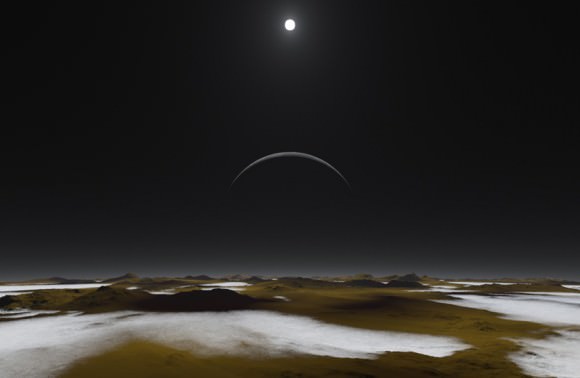
What is a Day on Pluto Like?
Since Pluto is so much farther from the Sun, the amount of sunlight that reaches Pluto is much less that what we receive on Earth. It has been estimated that the Sun would appear about 1,000 times dimmer than it appears on Earth. NASA has said that instead of a big yellow disc, the Sun would look more like other stars, although the Sun would be the brightest object in the sky.
However, it isn’t completely dark on Pluto. Since Pluto has a thin atmosphere, that atmosphere would scatter the light, but probably not enough to make a bright sky like we see on Earth or Mars. NASA says that at a certain time near dawn and dusk each day, the illumination on Earth matches that of high noon on Pluto. NASA has a “Pluto Time” website where you can plug in your location and find out what time of day you could experience the same amount of light (on a clear day) that Pluto is receiving.
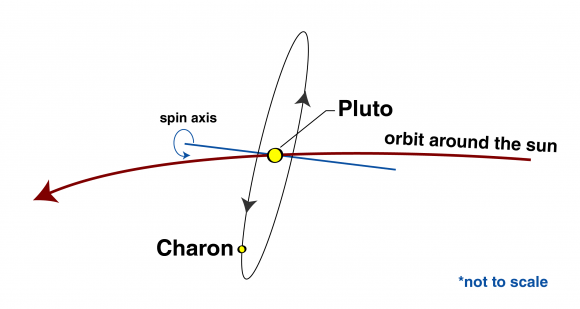
However, seasonal variations of daylight on Pluto can be extreme. Pluto’s year is 248 Earth years long, and so the seasons are very long. Plus, compared to most of the planets and their moons, the whole Pluto-Charon system is tipped on its side. Therefore, Pluto rotates on its “side” in its orbital plane, with an axial tilt of 122 degrees – very similar to the “sideways” planet Uranus. So at its solstices, one-fourth of Pluto’s surface is in continuous daylight, while another fourth is in continuous darkness.
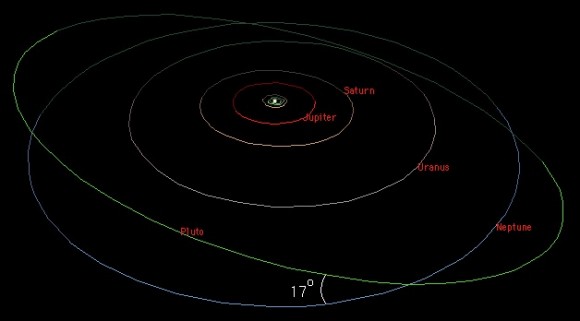
Also, Pluto travels around the Sun in a very elliptical orbit. At its closest point, or perihelion, Pluto gets as close as 4.4 billion km from the Sun. At its most distant point, or aphelion, Pluto is 7.4 billion km from the Sun. Therefore, the amount of sunlight varies throughout Pluto’s long year depending on how close or far it is to the Sun.
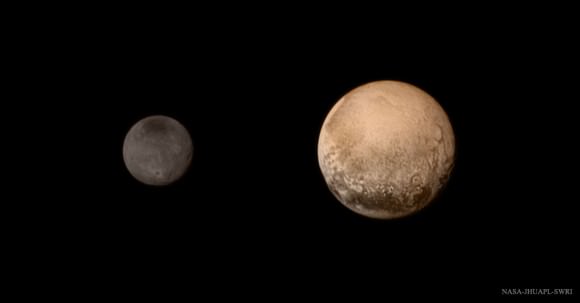
One interesting note is that Pluto and Charon are a binary planet system, and the two worlds are in orbit around each other. Also, Pluto’s moon Charon is tidally locked around Pluto. This means that Charon takes 6 days and 9 hours to orbit around Pluto – the same amount of time it takes for a day on Pluto. This means that Charon is always at the same place in the sky when seen from Pluto.
You would have the same view from Charon as well. From some vantage points on Charon, Pluto would always hang at the same spot in the sky, and for other parts, you wouldn’t be able to see Pluto at all.
New Horizons also captured a full day rotation for Charon, too, which you can see below:
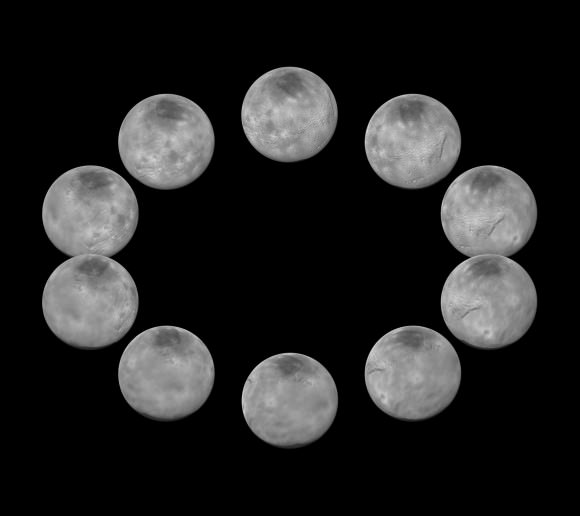
The images used in the Pluto and Charon “day” montages were taken by the Long Range Reconnaissance Imager (LORRI) and the Ralph/Multispectral Visible Imaging Camera as the New Horizons spacecraft zoomed toward the Pluto system, and in the various images the distance between New Horizons and Pluto decreased from 5 million miles (8 million kilometers) on July 7 to 400,000 miles (about 645,000 kilometers) on July 13, 2015. You can read more about these images here on Universe Today, and here on the New Horizons website.


Yes.. seasons on Pluto are exceedingly long. Winters and Springs are ~80 years long while Summers and Autumns are ~40 years long. Meanwhile, winter and spring occur at Aphelion (Farthest from Sol). NO WONDER pluto has a meandering and expansive flow of frozen gases migrating to and covering the Tombaugh region… a seasonal trait?
Does the size of the circle represent Pluto’s own motion or just a convenience?